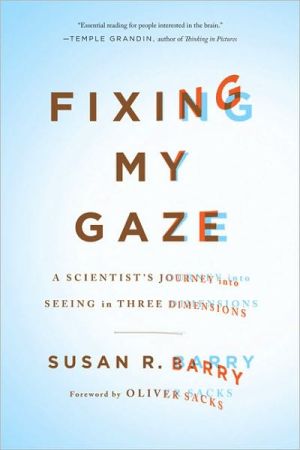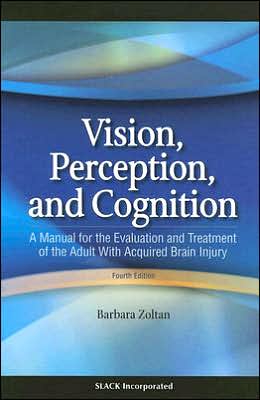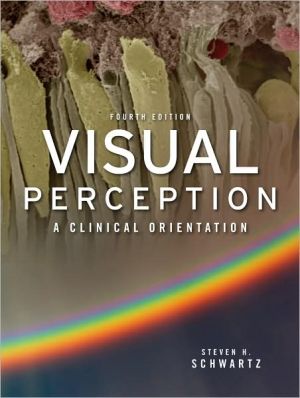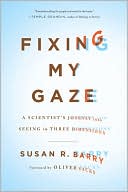The Fine Art of Prescribing Glasses without Making a Spectacle of Yourself
Search in google:
In a text dedicated to "... all those who have been offended by lingering dissatisfactions with lenses, frames, or their refractions," ophthalmologists Milder (emeritus, Washington U. School of Medicine, St. Louis, MO) and Rubin (emeritus, U. of Florida College of Medicine, Gainesville) include new clinical case studies and describe advances in refractive surgery and materials for glasses and contact lenses so practitioners can avoid pitfalls. The prefaces to the award-winning 1979 and 1991 editions are included. Annotation ©2004 Book News, Inc., Portland, OR Doody Review Services Reviewer:Robert T Spector, MD(Eye Surgical Consultants)Description:In my medical school, refraction 101 was not an offered elective. This book allows us to vicariously work through clinical problems to save face both in the lane and at the patient's local optician and learn our craft from the ground up. Perhaps most importantly, this book makes us THINK about basic optics and their clinical applications. Since its first edition in 1979, this book has been a must read for those in training as well as those in practice. There is no substitute!Purpose:The purpose of this book is to give the novice as well as the experienced eye clinician a way to solve problems that are encountered in everyday refraction and dispensing. The book is broken up into 22 subjects that are staples for the dispensing doctor or the surgeon trying to give his patient a better visual life. Without question, these subjects are critical for the clinician to know. The authors meet their goal with their genius and humor.Audience:This book is targeted for the novice through the well experienced practitioner.Features:The discussion in the book ranges from the simple myope and using the duochrome test to the implications of an accurate refraction prior to refractive surgery. There is not one chapter in this book that can be considered "filler." All the information imparted is vitally needed.Assessment:I have been an avid reader of the Rubin and/or Milder books since 1978...when I started my eye training. These books are very much like a fine wine: wasted on the inexperienced and savored by those who have experienced the fine satisfaction of a well thought out and completed refraction.
ForewordxiPreface to the Third EditionxiiiPreface to the First EditionxvIntroduction11Spectacles: Past, Present, Future5History6Modern Developments9Conclusion162Hyperopia17Definitions17The Influence of Age18The Spectacle Correction293Accommodation31Unraveling the Semantics31How Accommodation is Measured32Excessive Accommodative Amplitude: Real or Apparent?38Accommodative Spasm39Unequal Accommodation and Balancing46Subnormal Accommodation (Bilateral)55Refractive Error, Method of Correction, and Accommodation56Summary584Cycloplegia59Indications60Contraindications61Characteristics of Cycloplegic Drugs64Cycloplegia, Narrow Angles, and Glaucoma68Post-Cycloplegic Examination695Myopia71The Young Child71Muscle Imbalance72Treating Myopia Progression74Quasi-Myopic Progression78Pathologic Myopia79Unilateral Myopia and Antimetropia80Cycloplegia and Pseudomyopia82The Overcorrected Myope83Night Myopia87Pre-Presbyopia and Presbyopia89The Influence of Medical Problems and Drugs91Spectacle Design926Astigmatism95Indications for Lens Correction96Refracting the Astigmat at Near98The Spectacle Correction99Changes in Cylinder Power and Axis104Ciliary Spasm106Anisometropia108Bifocals111Irregular Astigmatism (Irregular Optical Refraction)1137Presbyopia121Definition122Onset and Influencing Factors122Determining the Power of the Add125Bifocals for Children126Bifocals in the Pre-Presbyopic Years128Bifocals for Presbyopia129The Effects of Contact Lenses136The Presbyopic Myope138The Presbyopic Anisometrope146Unequal Accommodative Amplitudes and Unequal Adds150Trifocals154Aphakia157Occupational Multifocals159Spectacle Design: Multifocal Types and Indications1598Progressive-Power Lenses167Properties170Selecting an Appropriate Progressive-Power Lens173Neutralizing an Unknown Progressive-Power Lens176Identifying an Unknown Progressive178Fitting the Progressive-Power Lens178Advantages and Disadvantages of Progressives181Indications for Progressives182Contraindications for Progressive182Prescribing the Progressive1849Muscle Imbalances188Esodeviations189Exodeviations199Vertical Muscle Imbalances206Anisometropia214The Use of Prisms, Summary21810Anisometropia221Symptomatic Anisometropia222Aniseikonia225Anisophoria236Anisometropia in Children242Anisometropia in Young Adults246Anisometropia in Presbyopia: The Problem Verite250Acquired Progressive Anisometropia Due to Cataract253Astigmatic Anisometropia256Contact Lenses and IOLs25811Cataract259Congenital Cataracts260Lenticular Myopia263Hyperopia and Cataract272Lenticular Astigmatism272Unequal Cataracts273The Second Eye in Monocular Aphakia277Near Vision Problems278Polyopia280Pupil Size and Vision281Macular Degeneration283Deferring Surgery28612Aphakia289Monocular Aphakia290Refracting the Aphake291Lens Design29313Pseudophakia295Preoperative Evaluation295The Ideal Postoperative Error296Monocular Cataract296Bilateral Cataracts299Helpful Hints in Refracting the Pseudophakic Patient305Early Opacification of the Posterior Capsule306The Final Postoperative Spectacle Prescription30614Refractive Surgery307Patient Selection308Preoperative Refraction309Corneal Limitations of Laser Surgery311Value of Retinoscopy311Presbyopia312Monovision313Mixed Astigmatism313Wavefront-Guided Ablations314Postoperative Care31415Contact Lenses317Contacts: Boon or Bust?320Contact Lenses for Various Refractive Errors: Indications and Contraindications330Contact Lenses are Not Protective339Proper Care of Contact Lenses340The Role of the Non-Dispensing Refractionist34116Absorptive Lenses345Absorption Characteristics of Clear Spectacle Lenses346Anti-Reflective Coating347Types of Absorptive Lenses349Medical Indications and Non-Indications for Absorptive Lenses356Nonmedical Indications for Absorptive Lenses361Educating the Consumer36317Medical Problems and Refractive Error366Changes in Size or Shape of the Eye367Changes in the Cornea369Changes in the Macula370Reversible Changes in the Crystalline Lens and Ocular Media371Cataracts374Changes in Lens Position375Changes in Accommodation375Congenital Anomalies377Medical Implications of Asthenopia378Neuro-Ophthalmologic Disorders37918Occupational Lenses381History and Job Description383Refraction386Spectacle Design386The Ubiquitous VDT Screen393Absorptive Lenses395Lens Prescribing for the Sports Enthusiast395How to Enhance Success39619The Partially Sighted Patient399Variables Affecting Success400Optical Aids409Non-Magnifier Optical Aids420Non-Optical Aids422Newer Developments and Future Directions423Improving the Results42420The Psychodynamics of Wearing Spectacles427The Eyes In Emotional Response428Why Do Patients Reject Their Glasses?428Disorders That Have No Physical Basis433The Doctor-Patient Relationship44021The Art of Dispensing442The Optician's Point of View443Writing the Prescription457The Refractionist's Point of View458Postscript45922The Dissatisifed Refraction Patient460The Patient's Complaint460The Way to Patient Satisfaction470Psychological Support479Index481








